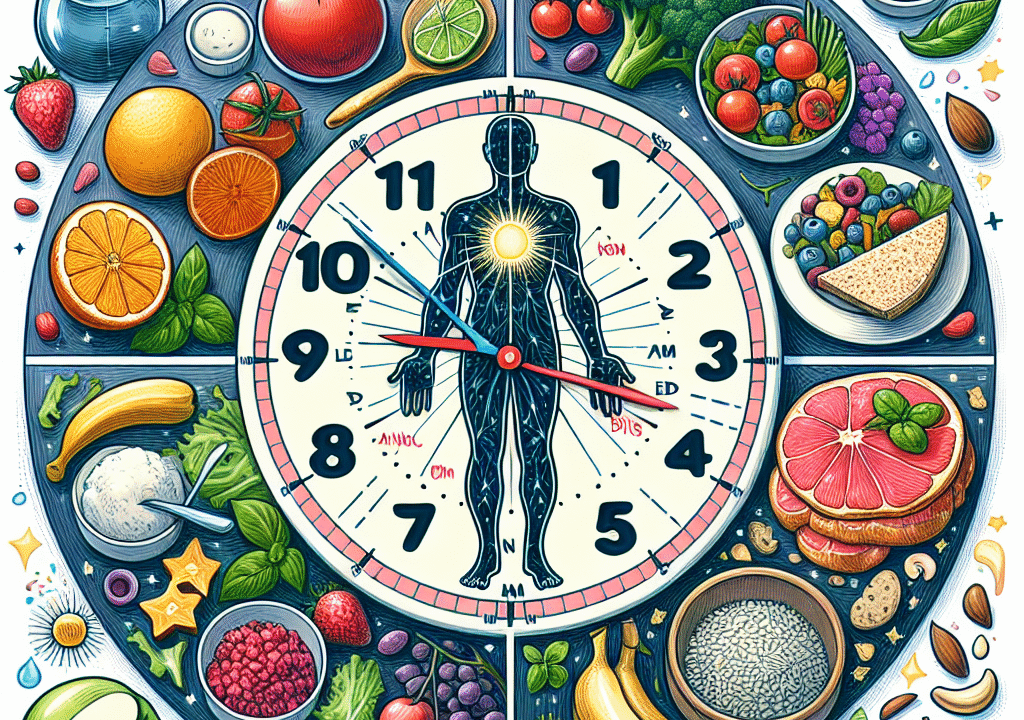
Uncovering the Mystery of Food Sensitivities
Have you ever felt bloated after a meal, experienced fatigue without explanation, or struggled with brain fog for days? You’re not alone. According to the American Nutrition Association, more than 70% of individuals report ongoing, unexplained symptoms tied to foods, yet most never receive a concrete diagnosis (Source: ANA, 2022).
Unlike food allergies, which cause immediate and often severe immune reactions, food sensitivities are more subtle, delayed, and often go unnoticed. This is where a structured approach known as the elimination diet steps in—a methodical, science-driven way to identify what foods are quietly sabotaging your well-being.
Dr. Amy Myers, MD, author of The Autoimmune Solution, affirms, “The elimination diet is the gold standard for identifying food sensitivities. It gives your body a reset and helps you connect the dots between what you eat and how you feel.”
Understanding Food Sensitivities vs. Allergies
First, it’s important to understand what you’re investigating. Food sensitivities differ from true food allergies in both cause and effect.
While allergies often result in immediate symptoms such as hives, swelling, or even anaphylaxis, food sensitivities present gradually—sometimes taking hours or even days to show symptoms. This delayed response makes them incredibly challenging to detect without a structured plan.
Common symptoms include:
– Digestive issues like bloating and gas
– Persistent fatigue or brain fog
– Skin flare-ups such as eczema or acne
– Headaches or migraines
– Joint discomfort
– Mood changes or irritability
For example, someone might enjoy pizza on a Friday night, only to suffer joint aches by Sunday morning. Without a methodical system, the connection between food and symptoms easily goes unnoticed.
Typical sensitivity triggers include:
– Gluten
– Dairy
– Soy and corn
– Eggs
– Nightshade vegetables (like tomatoes and potatoes)
– Artificial sweeteners such as aspartame
– Processed food additives like carrageenan and MSG
Studies estimate that up to 20% of people may struggle with food sensitivities that negatively impact their daily health (Source: NIH, 2021). Since standard blood tests often fail to detect these reactions, an elimination diet remains the most accurate method for identification.
The Elimination Diet: A Scientific Process
Think of the elimination diet as a personal experiment grounded in the scientific method—complete with a hypothesis, controlled testing, observations, and conclusions. It isn’t just about temporarily cutting out foods; it’s about learning the unique language of your body and decoding its signals.
Embark on each phase with curiosity and structure, and you could discover the key to relieving symptoms you’ve accepted as “normal.”
Step 1: Define Your Hypothesis
Before making any changes, identify the potential issues. Begin by tracking meals and any symptoms in a daily journal.
Ask questions like:
– Am I regularly experiencing digestive discomfort, fatigue, skin problems, or mood changes?
– When and how often do these symptoms appear?
From your observations, form a basic hypothesis. For example: “I believe gluten or dairy may be contributing to my ongoing fatigue and acne. I want to identify these triggers through an elimination and reintroduction protocol.”
To get started, consider using a downloadable Elimination Diet Planner and Symptom Tracker to document your journey effectively.
Step 2: Plan and Eliminate Target Foods
Preparation sets the stage for your success. In this phase, you’ll remove common trigger foods for 3 to 4 weeks to observe your body’s reaction in their absence.
Foods to eliminate temporarily include:
– Gluten (from wheat, rye, barley)
– Dairy (milk, cheese, yogurt)
– Soy and corn
– Eggs
– Nightshades (e.g., tomatoes, eggplant, potatoes, peppers)
– Processed sugars and sweeteners like aspartame
– Caffeine and alcohol
– Packaged and highly processed products
Stock up on nourishing, whole foods to make the process enjoyable. Focus on:
– Leafy greens such as kale and spinach
– Fiber-rich root vegetables like carrots and sweet potatoes
– Fresh fruits including apples, blueberries, and pears
– High-quality proteins like chicken, turkey, or wild-caught salmon
– Gluten-free grains like quinoa and wild rice
– Healthy fats such as olive oil and avocado
You may also choose to pause caffeine and alcohol, which can sometimes mask food-related symptoms. Learn more about how stimulants like caffeine affect gut health at eDrugstore.com.
Step 3: Observe, Record, and Establish a Baseline
This phase is where change begins. Over the next three to four weeks, avoid all foods on the eliminated list and start observing how your body responds.
Be sure to track:
– Everything you eat and drink
– Energy and alertness levels
– Bowel movements
– Sleep quality
– Skin clarity
– Mood and focus
This is what Dr. Josh Axe calls “symptom calm”—a point where inflammation decreases and your symptoms begin to fade. Without constant stressors, your body can reset, providing a clearer picture of what true health could feel like.
Lisa, age 42, shared: “After eliminating dairy and gluten, my migraines vanished within ten days. It was like flipping a switch.”
Step 4: Reintroduce Foods One at a Time
Once your baseline has stabilized and symptoms have diminished, it’s time to retest. Reintroduce each eliminated food group one at a time, spaced out over 72 hours.
For example:
– Day 1: Reintroduce eggs (in a simple, unprocessed form)
– Day 2 and 3: Continue avoiding all other reintroduction foods; observe any reactions
– Journal your observations carefully: Did fatigue return? Was digestion disrupted? Any skin changes?
Repeat this method with each food: dairy, gluten, soy, and others. Use the same timetable and maintain strict records.
If a food reliably causes a reaction, it’s a strong indication that it might be irritating your system and may need to be reduced or removed long-term.
Step 5: Interpret Your Results
Now, with robust notes from both the elimination and reintroduction phases, you can examine your results critically.
Look for:
– Which foods consistently triggered symptoms?
– What was the timing of those symptoms—immediate or delayed?
– Were the reactions mild or significant?
Let’s say you noticed a return of brain fog within 48 hours of gluten intake, but found no issues reintroducing eggs. That suggests the need to exclude gluten while potentially reintroducing eggs in moderation.
This data becomes your personalized wellness toolkit, offering clear insights without guesswork.
Step 6: Create a Sustainable, Personalized Plan
The point of this entire experiment is not lifelong restriction—but to gain clarity and control.
Based on your findings:
– Avoid triggering foods or rotate them carefully to minimize symptoms
– Use digestive enzymes or probiotics to support digestion, when recommended by a healthcare provider
– Check in with your body and re-test eliminated foods every 6 to 12 months—you may regain tolerance over time
As Dr. Mark Hyman of The Cleveland Clinic puts it, “Food is one of the most powerful influences on our wellness. When used wisely, it becomes a pathway toward healing rather than harm.”
Tips for a Smooth Elimination Diet Experience
To stay on track and maximize your outcomes:
– Consider involving a friend or joining an online support group for motivation and accountability
– Be meticulous with food reintroduction—it’s where the most insights are gained
– Seek help from a registered dietitian or healthcare provider, especially if you have underlying medical conditions
– Be patient. Though the process takes time, the benefits are long-lasting
Explore more resources on how medications and stimulants may affect your gut health at eDrugstore.com.
Final Thoughts: Transform Your Health Through Awareness
Food sensitivities can be elusive, but the elimination diet gives you the tools to detect hidden triggers and restore your vitality.
By following a methodical process and tuning into your body’s responses, you unlock a personalized roadmap to improved digestion, energy, mood, and overall well-being.
So start today with your journal—and treat every meal as an opportunity for self-discovery.
Resources and References
– American Nutrition Association. “Understanding Food Sensitivities.” ANA, 2022.
– National Institutes of Health (NIH). “Prevalence of Non-IgE-Mediated Food Sensitivities.” PubMed, 2021.
– Myers, Amy, MD. The Autoimmune Solution. HarperOne, 2015.
– Axe, Josh, DC. Eat Dirt. HarperWave, 2016.
– Hyman, Mark, MD. Food: What the Heck Should I Eat? Little, Brown & Co., 2018.
– Harvard Health Publishing. “Food Sensitivities vs. Allergies.” Harvard Medical School, 2023.
– eDrugstore. “How Caffeine and Alcohol Impact Your Gut Health.” https://www.edrugstore.com/blog/
Get Started
Download your free Elimination Diet Planner and Symptom Tracker to begin your step-by-step journey toward improved health and self-awareness.
Let the discovery begin.


